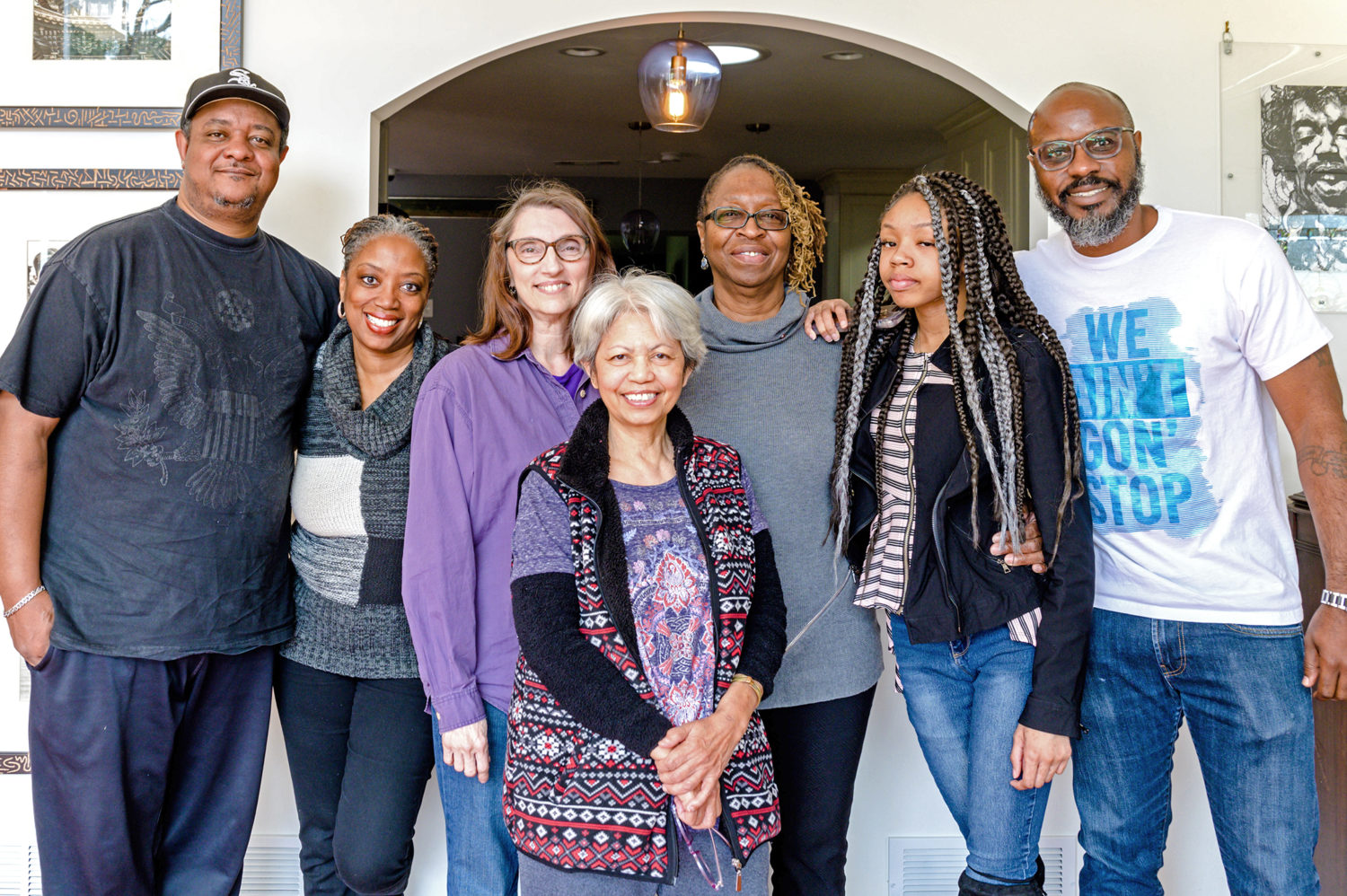In March, the SGI-USA Central Executive Committee—a body composed of national and territory leaders charged with setting the activity focus for the organization—voted to establish “Home Visit Week,” a time for leaders to focus solely on visiting members and offering personal encouragement. No other SGI activities will be scheduled during this period. The second full week of each month (starting the Monday after the second Sunday) will be designated as “Home Visit Week,” excluding Sundays to allow activities for the youth division, national language bureau groups, etc., to continue. The official dates for “Home Visit Week” are:
• April 15–20
• May 13–18
• June 10–15
• July: TBD due to youth discussion meetings
• Aug. 12–17
• Sept. 9–14
• Oct. 14–19
• Nov. 11–16
• December: TBD due to the holiday break
Soka Victory District
The SGI-USA is focusing on helping each district become a Soka Victory District toward the 60th anniversary of the SGI-USA in October 2020, commemorating SGI President Ikeda’s establishment of the first U.S. districts. The award is based on a set of four benchmarks that are indications of a healthy district. They are:
• 20 members and guests attend discussion meetings at least two times during the year.
• 20 people subscribe to the SGI-USA publications.
• 2 people receive the Gohonzon and start practicing Nichiren Buddhism.
• 7 members are financial sustaining contributors.
Our History: April 28, 1253
The Sound That Awakens Our Buddhahood
April 28 marks the 766th anniversary of the establishment of Nichiren Daishonin’s teaching of Nam-myoho-renge-kyo. The following are excerpts from an essay by SGI President Ikeda, which appeared in the Feb. 29, 2008, World Tribune, pp. 2–3. In it, he discusses the origins of April 28, 1253, and its significance to today’s SGI discussion meetings.
Buddhism is a teaching of hope.
Nam-myoho-renge-kyo is the sound that awakens the Buddha nature of all humankind. It is the great teaching of supreme hope. Nichiren Daishonin first began to propagate this teaching 755 years ago [766 years ago, as of 2019]. This started with the declaration of his teaching on April 28, 1253, at Seicho-ji temple in Awa, his native province (present-day southern Chiba Prefecture). He was 32 years old.
He wrote of his thoughts at that time in his treatise “The Opening of the Eyes.” It was clear to him that people in the Latter Day of the Law had fallen into evil paths solely because they placed their faith in erroneous teachings and principles. He realized that he would almost certainly be persecuted
if he dared to publicly state this truth, but he also knew that if he didn’t say anything, he would be guilty of a lack of compassion, because he would be turning his back on people’s suffering.
Refuting the erroneous and revealing the true is the core of Buddhism.
Nichiren proclaimed his teaching for the first time in the image hall of the quarters of his teacher, Dozen-bo, at Seicho-ji temple around noon. On that occasion, he sternly criticized the erroneous teachings of other Buddhist schools in Japan of that day and presented the supreme teaching of Nam-myoho-renge-kyo. This spirit of refuting the erroneous and revealing the true is the essence of Nichiren Buddhism. It was out of his profound sense of gratitude to Dozen-bo, whom he wished to lead to the truth, that he decided to first expound his teaching at the place where he had studied Buddhism as a youth.
Our discussion meetings, which are the foundation of our activities, are all gatherings of small groups of people.
At this important juncture, Nichiren changed his name from Zesho-bo Rencho—which he took on when ordained as a priest— to Nichiren, written with the Chinese characters for “sun” and “lotus.” The sun illuminates the world and the lotus brings forth beautiful blossoms unsullied by the muddy water in which it grows. We can read the name Nichiren as indicating the Daishonin’s identity as the Buddha of the Latter Day of the Law. [In “Letter to Jakunichi-bo,” Nichiren writes, “My giving myself the name Nichiren (Sun Lotus) derives from my own enlightenment regarding the Buddha vehicle” (The Writings of Nichiren Daishonin, vol. 1, p. 993).]
Small gatherings are our starting point.
In “Letter to the Priests of Seicho-ji,” … we learn that Nichiren announced his teaching to a small group of people, comprising of several priests of Seicho-ji and others who had gathered. There is no record of the exact number of those present. It was thus to a small group, not a large assembly, that Nichiren first proclaimed Nam-myoho-renge-kyo, the teaching of universal enlightenment that would resound throughout the eternal future of the Latter Day of the Law.
This is the true starting point of the kosen-rufu movement that we are today advancing. Our discussion meetings, which are the foundation of our activities, are all gatherings of small groups of people.
The Mystic Law is wondrous and unfathomable.
We of the Soka Gakkai have spread the Mystic Law around the globe, just as Nichiren instructed, taking it to 190 countries and territories [192, as of 2019]. Our noble members, in the face of all sorts of changes and challenges, have steadily propagated the Mystic Law in the respective lands of their mission. Setting an example of good citizenship, they have worked tirelessly for the prosperity of their beloved homelands. This is the reason our organization has achieved such tremendous growth.
You are reading {{ meterCount }} of {{ meterMax }} free premium articles

